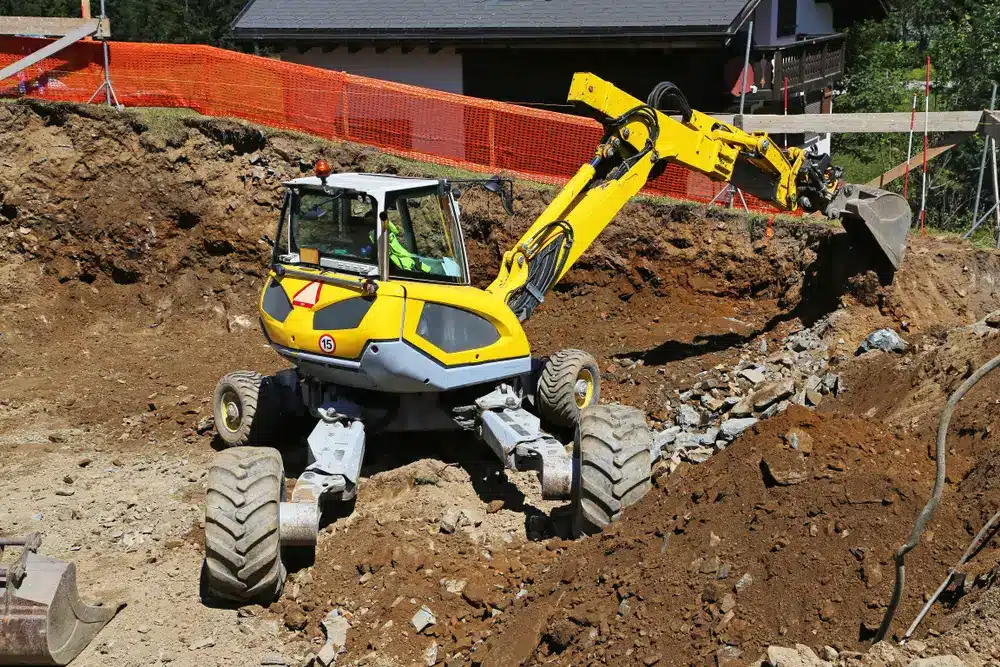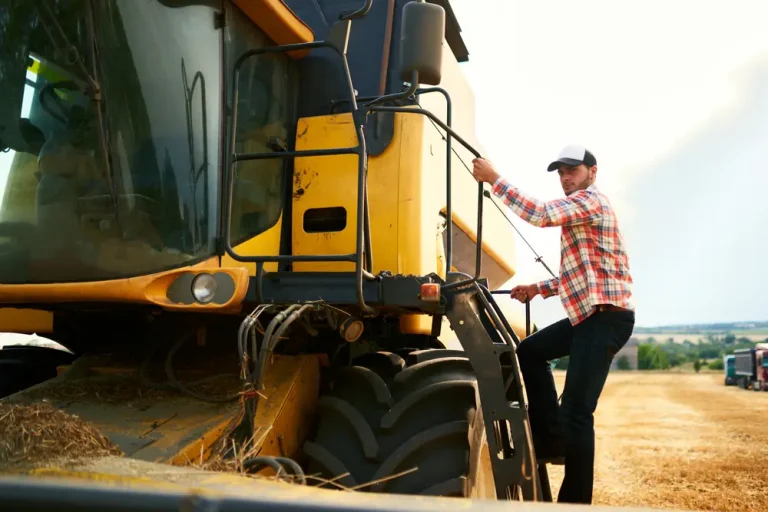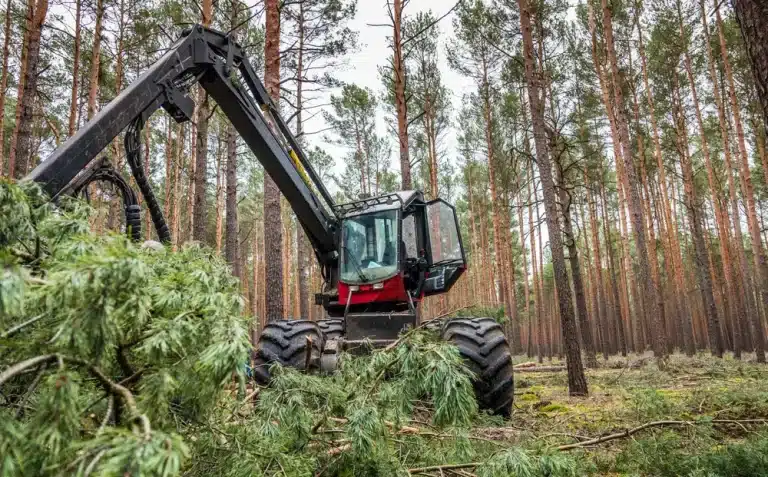Mulcher attachments designed for spider excavators bring exceptional performance to terrain where traditional machines cannot go.
These tools are used by contractors, landowners, and environmental teams who operate in steep, rugged, or sensitive landscapes.
Whether it’s post-disaster vegetation clearing, wildfire prevention, or sustainable land restoration, this specialized equipment is now a key component of forestry and infrastructure maintenance across remote and uneven regions.
Understanding how these attachments function, where they excel, and what makes them different from others on the market is essential for selecting the right solution for challenging job sites.
Why spider excavators are ideal for complex terrains
Spider excavators, also known as walking excavators, are engineered to handle conditions where wheels or tracks are ineffective.
Their unique leg-style chassis allows the machine to adapt to slopes, riverbanks, and rocky ground without compromising stability. This mobility opens the door to mulching in areas that would otherwise be inaccessible using standard equipment.
Mulcher attachments expand the spider excavator’s utility, turning it into a versatile land clearing solution. Forestry teams, municipal crews, and private contractors choose this setup when vegetation management must be done on extreme inclines or in ecologically sensitive environments. Projects in mountain forests, drainage ditches, or alpine pastures often rely on this combination to avoid erosion and minimize soil compaction.
Adaptability makes the spider excavator and mulcher duo a preferred choice for:
- Slope stabilization and vegetation control
- Remote forest access trail maintenance
- Post-disaster clearing in hard-to-reach areas
Read the full comparison between skid steer mulchers and spider excavator mulchers.
How movement and stability work together
The legs of a spider excavator function like an all-terrain suspension system. Each one moves independently, adjusting in real time to the unevenness of the terrain. This gives the operator the ability to keep the machine level and stable, even while mulching on a 40-degree slope or over boulders and logs.
As a result, the mulcher remains in direct contact with the vegetation without bouncing or losing momentum, providing clean, even shredding.
This dynamic balance between reach and ground conformity is what gives spider excavators a clear advantage over tracked or wheeled units.
Why track-based machines fall short on slopes

Tracked and wheeled machines rely on contact area and traction, which limits their effectiveness on steep or slippery surfaces.
When a track slips, the machine becomes unstable, compromising both safety and performance. In contrast, spider excavators can step into position, plant firmly, and maintain control without relying on slope grip.
This makes them especially valuable in rocky canyons, near rivers, or on loose soil.
For contractors working in alpine or riparian zones, the mobility and balance of a spider excavator paired with a mulcher head are unmatched.
Where these machines operate best
Spider excavators with mulcher attachments are ideal for high-elevation forestry, power line access roads, dam embankments, and post-flood or landslide cleanups.
These are areas where the soil may be unstable, the slope extreme, or vegetation dense.
Their reach and foot-controlled movement also make them suitable for operating in marshes or wet meadows where standard equipment would sink or damage the environment.
For examples of these conditions in action, browse our use cases page.
“We rely on spider excavators in areas where conventional machines simply cannot function. Their ability to mulch through steep, wet, or debris-filled terrain has allowed us to complete jobs others turn down.”
— Operations Lead, Mountain Infrastructure Services
How mulcher attachments boost performance
Mulcher heads for spider excavators are precision tools, capable of grinding shrubs, small trees, and dense underbrush with speed and consistency. These attachments vary in cutting width, tooth type, and rotor strength depending on the vegetation density and ground type. Matching the right attachment to the terrain is essential for safe and efficient operation.
A key advantage is the ability to mulch while keeping the excavator stable on uneven ground. This reduces the chance of tipping and helps maintain productivity even during complex tasks. Since spider excavators can rotate and reach vegetation in awkward spots, the mulcher remains active in tight or sloped conditions where standard equipment would stall or slide.
Performance is further optimized by integrating hydraulic systems that regulate pressure and flow, ensuring smooth and controlled shredding.
For land managers focusing on efficiency, learn how to optimize mulcher performance, for the best configuration.
Precision control on uneven terrain
Spider excavators use hydraulic flow control systems to adjust the speed and torque of the mulcher in real time. This means the attachment can slow down when grinding hard material or speed up through lighter brush.
When working on unstable surfaces, maintaining low vibration and steady pressure is critical. These controls also prevent overload, protecting both the attachment and the machine.
This results in smoother operation, cleaner cuts, and less wear over time.
Did you know? Spider excavators equipped with mulchers can operate on slopes up to 70 percent grade, where traditional tracked machines fail or pose safety risks. This makes them one of the most effective tools for vegetation management in alpine zones, riverbanks, and erosion-prone terrain.
Adaptation to vegetation types
One of the strongest benefits of spider-excavator-mounted mulchers is the ability to handle various vegetation types without changing machines.
From green, wet underbrush to dry pine saplings or thick-rooted invasive plants, these attachments come in configurations designed to cut through it all.
Some models use fixed teeth for heavy grinding, while others feature swinging hammers for flexible cutting.
This adaptability is critical for teams working across diverse terrains within the same project.
Operator visibility and machine reach
Because of the elevated cabin and multi-angle articulation of spider excavators, the operator has a clear view of the mulcher head and surrounding vegetation.
It improves safety and cutting precision. The excavator’s long reach also means the mulcher can work across ditches, behind rocks, or on ledges without repositioning the entire machine.
This reach reduces fuel consumption, labor time, and environmental disruption, especially in sensitive ecosystems.
Choosing the right attachment for your project
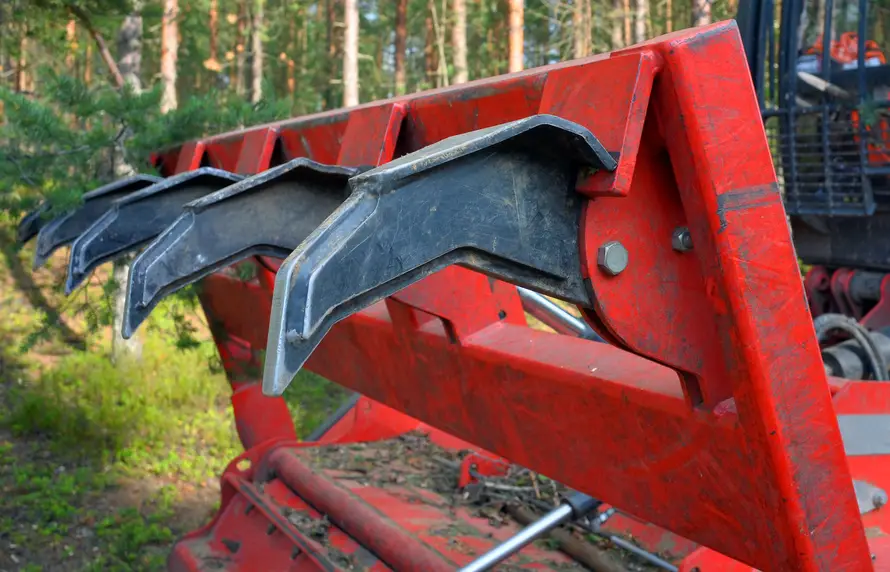
Several criteria determine which mulcher attachment is best for your spider excavator. These include terrain steepness, the type of vegetation, job duration, and environmental constraints. A high-flow hydraulic mulcher is often required for heavy-duty clearing, while a lighter model may suffice for brush trimming.
Material size also matters. Some attachments are better suited for softwood and light scrub, while others are designed for hardwood trunks and thick root mats. The operator’s visibility and reach also factor into which cutting head should be used.
Before selecting an attachment, evaluate:
- Whether the worksite has a high risk of fire
- If the area is protected land or wildlife habitat
- How much maneuverability is needed for the job
For help planning your approach, read how mulchers help reduce wildfire risks in dry zones.
Key features to compare before selection
Rotor design, cutting diameter, and hydraulic flow capacity are crucial elements to evaluate.
A mismatch between your excavator’s output and the mulcher’s demand can cause overheating or poor performance.
You’ll also want to consider cutting tooth shape and mounting pattern, which affect efficiency and maintenance frequency.
How environmental factors affect your choice
Mulching in protected forests, watersheds, or biodiversity corridors demands more than power. It requires precision and reduced impact.
Lighter attachments with smaller footprints may be needed to avoid soil disruption.
In fire-prone zones, attachments that generate less heat and fine debris are often preferred to minimize risk.
When job frequency justifies a heavier tool
For daily or multi-seasonal operations, investing in a robust, high-capacity mulcher pays off.
These tools are built to withstand constant use, reducing repair needs and maintaining consistent output.
Heavier-duty attachments may have higher upfront costs, but the long-term savings are often significant.
Maintenance and durability in tough conditions
Operating in challenging terrain puts extra wear on both the mulcher attachment and the excavator.
Proper upkeep is critical to prevent breakdowns and reduce long-term costs. Routine inspections, regular blade sharpening, and hydraulic system checks should be part of your daily workflow.
Cleaning the mulcher head after each use ensures debris does not accumulate and cause mechanical stress. Greasing moving parts and checking the cutting teeth for cracks or wear extends the life of the tool and keeps performance consistent over time.
Refer to How to maintain your forestry mulcher for long-term performance for in-depth steps that apply across machine types, including spider-mounted setups.
Preventive maintenance practices
Daily maintenance should include checking hydraulic lines, tightening bolts, lubricating bearings, and clearing debris from air vents.
Following a routine maintenance schedule helps avoid downtime and ensures the mulcher operates at peak performance throughout the project lifecycle.
What to look for during inspections
Focus on tooth wear, rotor balance, and oil leaks.
Look for stress cracks near welds or mounting points, which are common in machines used on rocky or uneven ground.
Check for unusual sounds during operation, as these may signal internal issues with bearings or shafts.
How cleaning improves equipment life
Mulching creates high dust levels, especially in dry conditions. Residue can harden on the housing, rotor, and cutting elements, increasing friction and heat. Pressure washing and manual cleaning after each use help prevent buildup that can lead to corrosion, misalignment, or mechanical failure.
When to rent or buy your mulcher
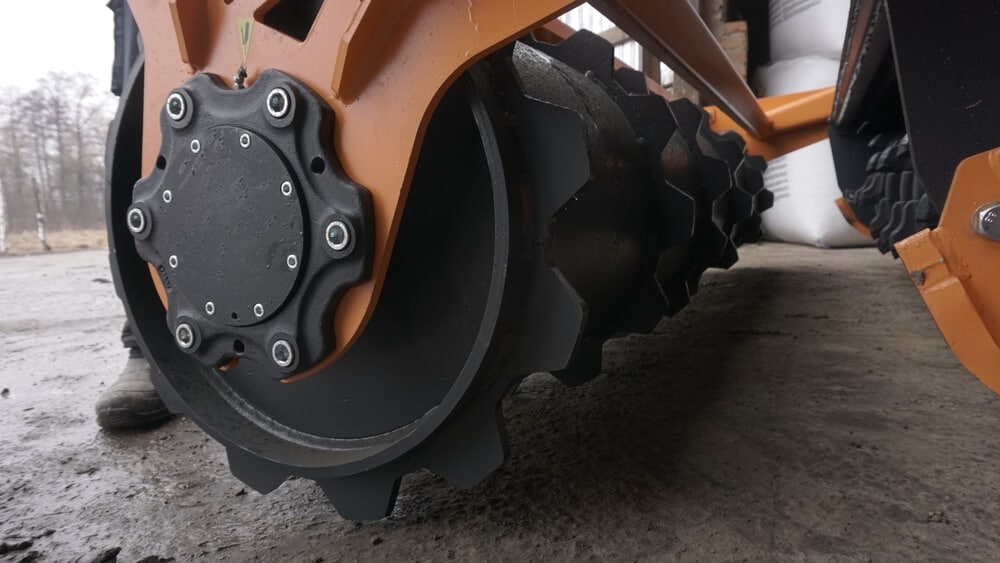
Deciding between renting or purchasing a mulcher attachment depends on frequency of use, project scale, and transport logistics. For short-term or seasonal projects in extreme landscapes, renting may provide better flexibility and cost control. Long-term operators, especially those focused on sustainable land management, often benefit from investing in their own equipment.
- Ownership allows for customization, maintenance tracking, and team training.
- Renting can be ideal for one-time clearings or exploratory land development.
Cost and return on ownership
If your team uses mulchers more than 60 days per year, owning becomes cost-effective. You avoid rental delays, gain tax advantages, and can customize attachments for your specific application. Ownership also allows better long-term asset planning and resale potential.
When renting gives you an advantage
For one-off projects or remote jobs that require only a few days of mulching, renting a mulcher is the better solution. Many rental packages include delivery, support, and maintenance, which minimizes your risk and lets you scale up quickly if needed.
Planning ahead for job scheduling
Rental mulchers may not be available on short notice, especially during wildfire season or after natural disasters. Owning your equipment provides flexibility to respond quickly, especially when disaster recovery or seasonal weather calls for immediate vegetation control.
Focused on safety and sustainability
Safety is a major concern when operating on slopes or loose ground. Mulcher attachments add rotational force that must be controlled precisely. Operator training, ground assessment, and proper protective gear are mandatory for safe use.
Implementing environmental practices is also critical. Using a mulcher in wetland areas or near watercourses requires care to avoid disrupting ecosystems. Choosing low-impact techniques and monitoring debris spread are key responsibilities for any project manager.
Browse Safety tips when operating a mulcher in tough terrain and The role of mulchers in sustainable land management to ensure compliance with best practices.
Terrain safety considerations
Before starting, assess the slope angle, ground firmness, and potential hazards like loose rocks or sinkholes. Ensure the machine is positioned on stable footing, and that escape paths are mapped out in case the terrain shifts during operation.
Responsible use in sensitive environments
Avoid over-mulching near streams or protected zones. Use buffer zones and containment practices to prevent chips and dust from spreading. Choose mulcher models that meet noise and emissions standards if working near wildlife habitats.
Operator training and jobsite preparation
Teams should receive training specific to spider excavators and mulcher control systems. Use spotters, safety zones, and communication protocols to reduce risks. Having a maintenance log and emergency plan on site also adds a layer of security.
Turn your spider excavator into a strategic asset
Whether managing steep terrain, clearing vegetation after a flood, or maintaining access in sensitive ecosystems, mulcher attachments for spider excavators offer unmatched control and flexibility.
These machines bridge the gap between power and precision, helping professionals handle jobs that demand more than conventional solutions can provide.
With the right setup, proper maintenance, and a clear understanding of your project’s demands, your spider excavator becomes more than a tool, it becomes a strategic asset.
Request a Free quote, or Contact us for guidance and tailored recommendations
Frequently asked questions about spider excavator mulchers
What types of terrain can a spider excavator with a mulcher handle?
Spider excavators equipped with mulchers are designed for steep slopes, unstable soils, wetlands, riverbanks, and rocky ground. Their leg-based mobility allows them to operate in areas inaccessible to wheeled or tracked machines. These machines are especially effective in mountainous forests, post-flood cleanups, and along power line corridors.
Explore our full applications page to see real-world examples of terrain challenges solved with this setup.
What is the slope limit for spider excavator operation with mulchers?
Spider excavators equipped with mulcher attachments can safely operate on slopes up to 70% grade (approximately 35 degrees), depending on the specific machine model, terrain conditions, and operator skill. Some high-end models, with optimized leg articulation and weight distribution, may perform controlled operations on slopes as steep as 40 degrees (84% grade) under expert handling.
Always refer to your manufacturer’s guidelines and perform a site-specific risk assessment before working on slopes above 30 degrees.
How is a mulcher attachment installed on a spider excavator?
Most mulcher heads are mounted to the boom of the spider excavator using a universal coupler or a dedicated bracket. Hydraulic lines are then connected to provide power from the excavator’s system. Some models require high-flow hydraulic circuits to function efficiently. Always follow manufacturer specifications and safety protocols during setup.
If you need guidance about compatibility, visit our services page or request a Free quote for expert support.
Can I use the same mulcher on different types of vegetation?
Yes, as long as the mulcher is rated for the density and size of the material. Some attachments are better for light brush and undergrowth, while others are designed for saplings, hardwoods, or invasive species. Choosing the right tooth configuration and rotor type is essential for performance and equipment life.
Read What types of vegetation can a mulcher handle
What’s the best way to maintain my spider excavator mulcher?
Daily inspections, cleaning after use, blade sharpening, and hydraulic checks are essential. It’s important to monitor tooth wear, rotor condition, and system pressure to prevent breakdowns. Adopting a preventive maintenance plan helps extend the life of both the attachment and the excavator.
Refer to our guide on How to maintain your forestry mulcher for long-term performance for step-by-step advice.
Should I rent or buy a mulcher for my spider excavator?
If you need the attachment for seasonal or one-off work, renting gives flexibility and lower upfront cost. For frequent use or long-term vegetation management projects, ownership provides better ROI, customization, and reliability.For a breakdown of each option, see Renting vs buying a mulcher: what’s best for your project?
